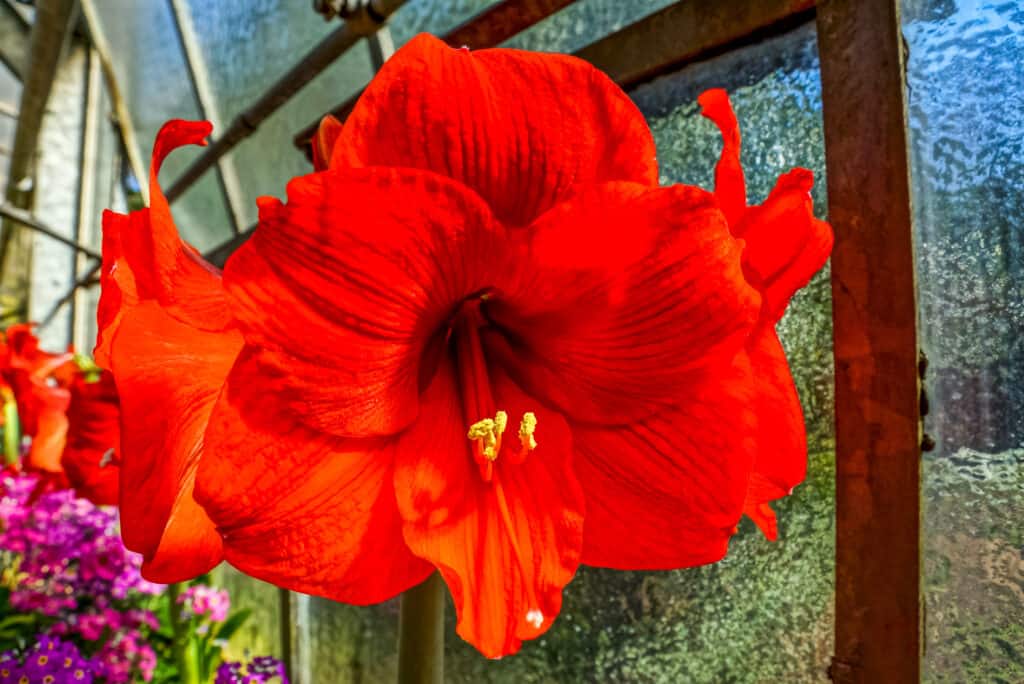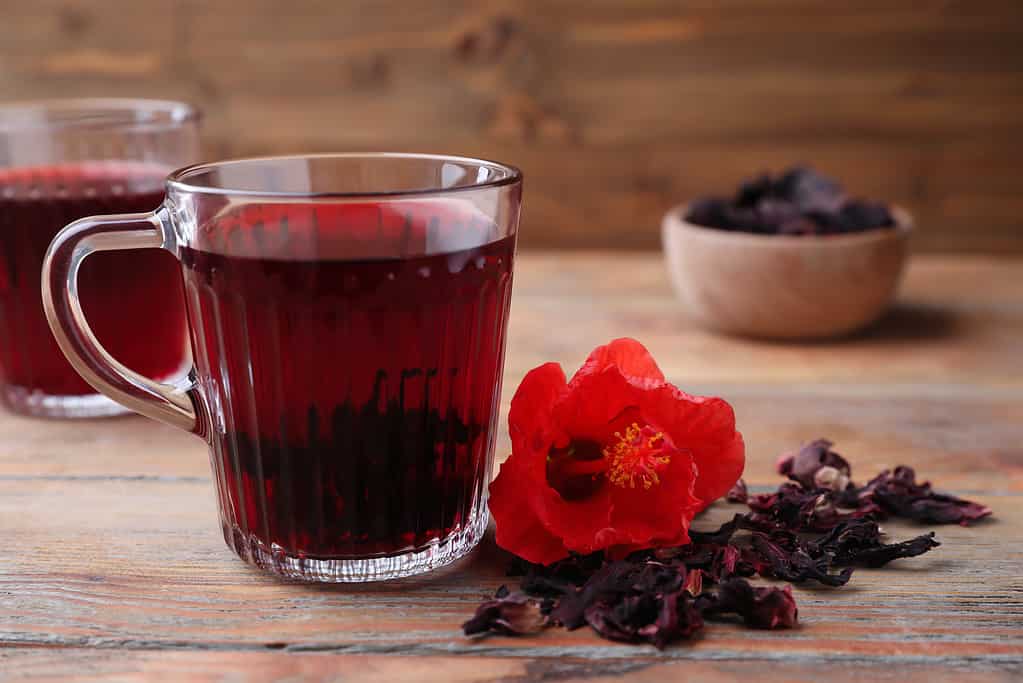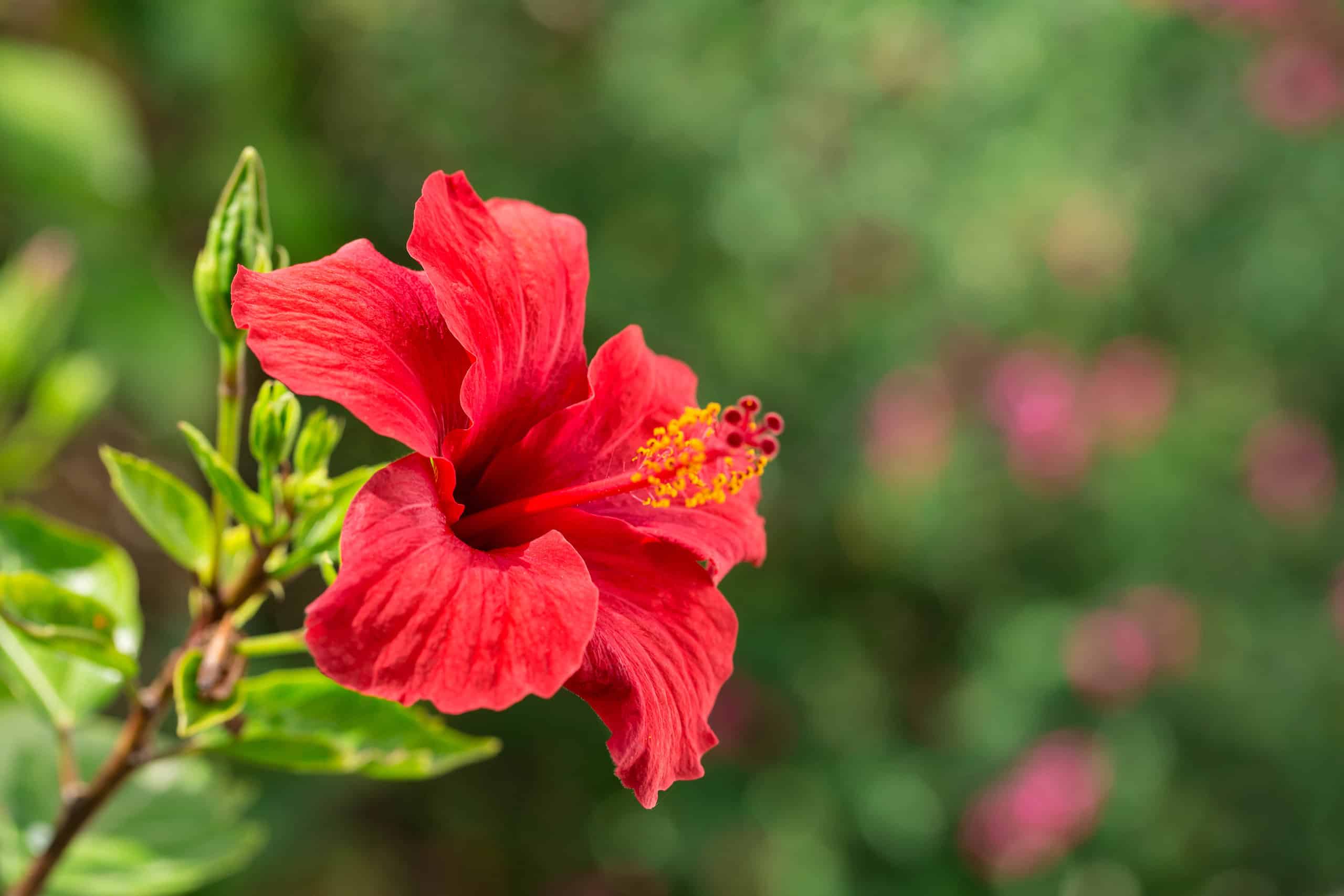It’s used in different cultures throughout the world in both hot and cold teas. These flowers grace gardens, adding to their visual appeal. There’s nothing shy about them! Learn everything you need to know about red hibiscus!
Red Hibiscus: Everything You Need to Know
What Is Red Hibiscus?
Red hibiscus (scientific name: Hibiscus rosa-sinensis) points to various hibiscus plants with bright red flowers. The entire genus includes a variety of different species, and they bloom in different colors. However, red hibiscus is a well-known and eye-catching variety. These flowers are showy. They take center stage, sometimes growing up to eight inches in diameter.
The colors range from a bright red to a deeper more crimson red. Aesthetically, many find them pleasing. There are other opinions about how showy these flowers are though. Some might feel they are too dramatic and prefer to let their gardens display a subtler vibe. The red hibiscus isn’t just about a visual display. These flowers are also used medicinally and culinarily.

Red hibiscus ranges in color from a bright, vibrant red to a deep crimson color.
©Sina Ettmer Photography/Shutterstock.com
Nutrients in Red Hibiscus
The red hibiscus is a wonderful addition when preparing meals because it contains several important nutrients. Of course, this depends on the maturity of the plant you’re using and the conditions of the soil it was grown in but generally, red hibiscus contains the following:
- Vitamin C, also known as ascorbic acid, helps to support your immune system and the synthesis of collagen. It also helps you absorb iron.
- Iron is another nutrient that red hibiscus delivers. This nutrient helps you form new red blood cells, helps with your energy, and also helps in the transportation of oxygen in your body.
- Calcium is fantastic for bone health, nerve and muscle function, and healthy teeth.
- Vitamin B2, also known as riboflavin, assists with the conversion of food into energy. It helps you with your largest organ, your skin. Plus, it helps you maintain healthy vision.
- Anthocyanins, which make red hibiscus so boldly colored, have the antioxidant properties you need, which support heart health and deliver anti-inflammatory benefits.
Red Hibiscus Uses
The uses for a red hibiscus vary. Sometimes there is a specific cultural use and other times, it’s more of a practical use. For instance, because red hibiscus is showy, it’s often used to add bright colors to gardens and can be fantastic in large environments like public parks. Just behind the hibiscus flower, there is a fleshy part called the calyx. This part of red hibiscus is often used in herbal teas. The flavor can be compared to cranberries. It has a bit of a tart, pleasant flavor that’s enjoyed throughout the world.

Red hibiscus doesn’t just grace gardens, it can also be enjoyed in tea and a variety of dishes.
©Ihor Hvozdetskyi/Shutterstock.com
Due to its nutrient composition, it’s also used to create jams and jellies. Sometimes, it’s an edible garnish and it’s often used to add a bit of color to dishes. The red hibiscus is often used medicinally as well. It has several different health benefits and can potentially assist with regulating blood pressure, helping with digestion, and even serving as a diuretic. Those who consume red hibiscus tea use it to aid cardiovascular health. It’s also widely used to maintain healthy cholesterol levels. These are traditional uses and there is a long history of red hibiscus being used in this manner.
Red Hibiscus Dosages
If you’re consuming red hibiscus in tea, typically, all you need is a single teaspoon of dried hibiscus flower. For a stronger flavor and effect, you can add a second teaspoon. Steep the flowers in eight ounces of hot water for a minimum of five minutes and a maximum of 10 minutes. Then, use a strainer, and enjoy! If you intend to use the flowers in a recipe, it’s a matter of preference. Start small and then just keep adding until you reach the desired color and flavor. Sometimes, red hibiscus is used in supplements as well. This might be in the form of an extract or even in capsules. These dosages are suggested by the manufacturer so be sure to check their recommendations.

Those who consume red hibiscus tea use it to aid cardiovascular health.
©New Africa/Shutterstock.com
Red Hibiscus Side Effects
Generally, ingesting red hibiscus is safe. The body tolerates it well. However, there may be some side effects to the ingestion of red hibiscus. For example, it might interact with certain medications. Some people may even be allergic. There have been reports of lowered blood pressure as well. Additionally, there have been reports of gastrointestinal issues and side effects like frequent urination. Anyone intending to consume red hibiscus should first consult with their medical provider to ensure that ingestion is safe.
Thank you for reading! Have some feedback for us? Contact the AZ Animals editorial team.








